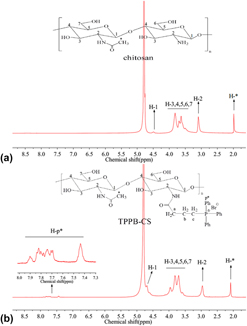Article contents
Antitumor activity and antitumor mechanism of triphenylphosphonium chitosan against liver carcinoma
Published online by Cambridge University Press: 14 August 2018
Abstract

N-(3-Carboxypropyl) triphenylphosphonium bromide chitosan (TPPB-CS) was synthesized and characterized by FTIR, 1H NMR spectrometer, and Zeta potential. TPPB-CS showed a selectivity-toxicity among cancer cell lines (MG-63 and HepG2 cells) and mouse embryonic fibroblast cells (NIH3T3 cells). A significant effect on inhibiting cell migration in HepG2 cells was observed in vitro, and TPPB-CS could effectively inhibit tumor growth in H22-bearing mice in vivo. Furthermore, the distribution of cell cycle, the level of reactive oxygen species (ROS), mitochondrial transmembrane potential (∆ψm), the expression of tumor necrosis factor α (TNF-α), and vascular endothelial growth factor (VEGF) were examined to investigate the antitumor mechanism of TPPB-CS. The results suggested that the antitumor activity of TPPB-CS may be attributed to delay the cell cycle in S phase, alter the ROS and ∆ψm level, as well as regulate the TNF-α and VEGF secretion. TPPB-CS can become a promising anticancer drug for clinical therapy.
- Type
- Article
- Information
- Copyright
- Copyright © Materials Research Society 2018
References
REFERENCES
- 9
- Cited by


